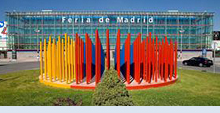 |
European Planetary Science Congress 2012
IFEMA-Feria de Madrid
23 – 28 September 2012, Madrid, Spain |
 |
|
GP1 Gas Giant Atmospheres & Interiors |
| Convener: Leigh Fletcher | Co-Conveners: Glenn Orton , Patrick Irwin , Tristan Guillot |
|
Oral Program
/ Thu, 27 Sep, 14:30–18:00
/ Room Saturn
Poster Program
/ Attendance Thu, 27 Sep, 18:15–19:45
/ Poster Area
|
Recent observations of the gas giants have revealed complex evolving atmospheric systems, from short term variability (impacts on Jupiter, mid-latitude storms on Saturn, discrete features on Uranus and Neptune), medium-term changes (the life cycle of Jupiter's axisymmetric structure, seasonal storms on Saturn) and seasonally-induced hemispheric asymmetries and equator-to-pole contrasts on Saturn, Uranus and Neptune. Temporal variability within the weather layer may provide key diagnostics of processes occurring in regions inaccessible to previous remote sensing experiments, within the deep planetary interior. The Juno mission, en route towards Jupiter, is set to revolutionise our understanding of Jupiter's atmosphere and interior below the clouds. Abstracts concerning the present state of the neutral atmospheres (dynamics, chemistry and vertical structure); their temporal evolution and coupling to the planetary interior (internal structure, convection and interaction with the atmosphere); and predictions for the Juno mission are particularly welcome, along with a discussion of future priorities for the exploration of gas giant planet atmospheres from ground- and space-based facilities.

